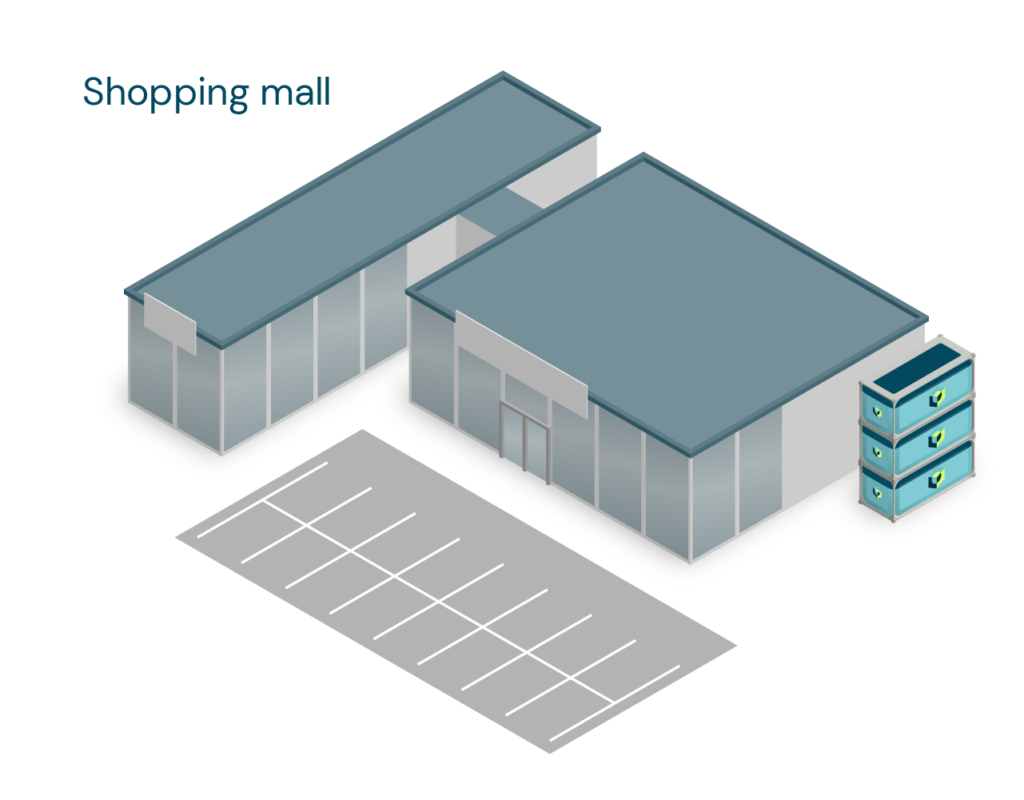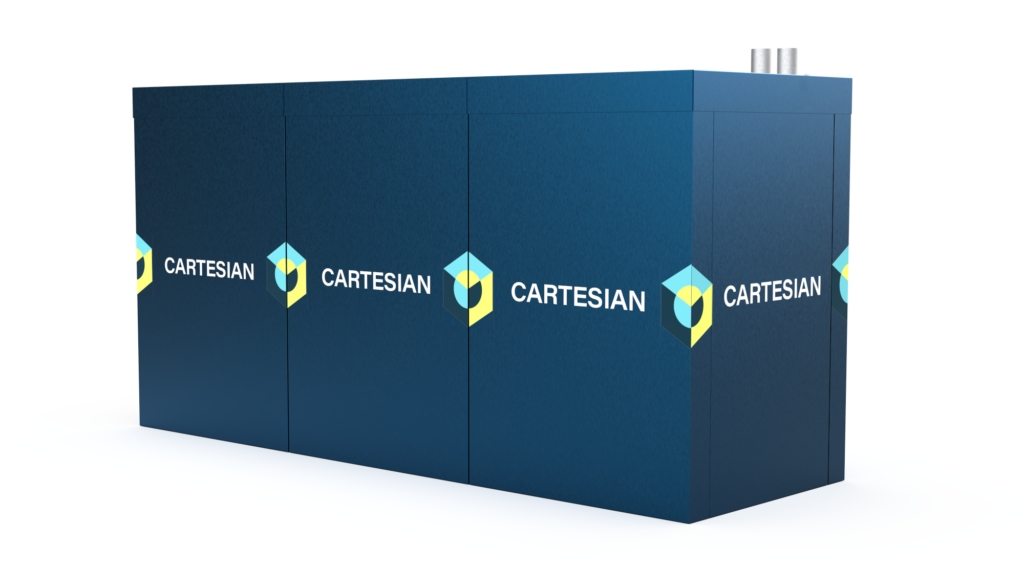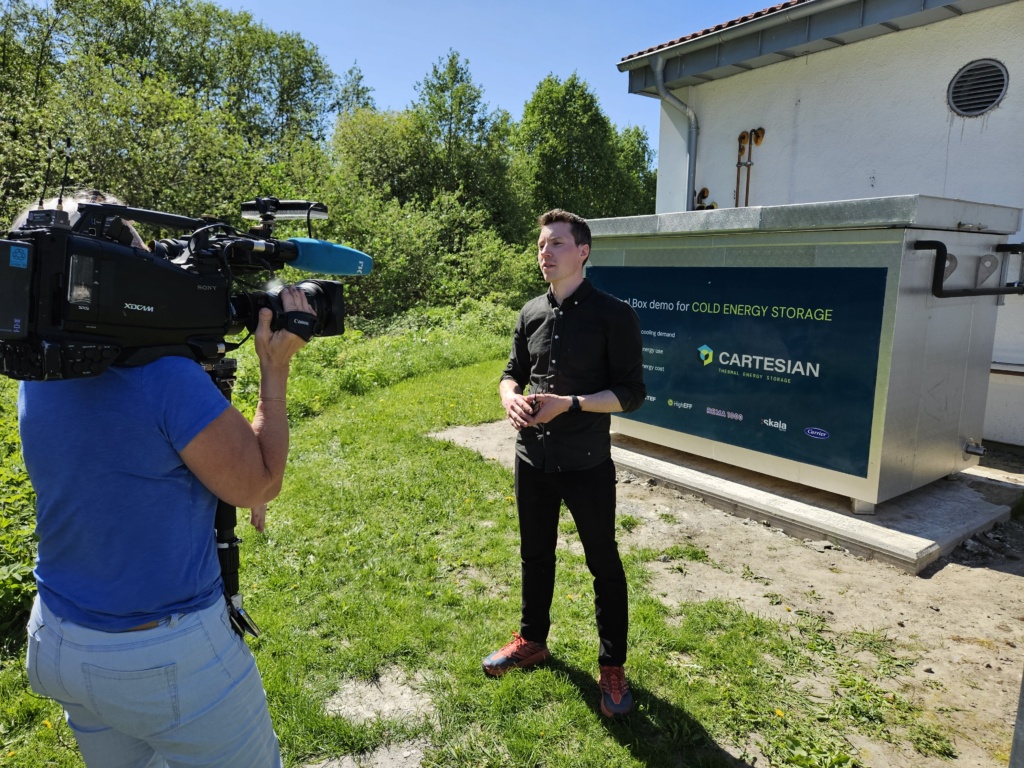Supermarkets and Shopping Malls: Smarter cooling saves energy – and costs

If you are running a shop or a shopping centre, you know how crucial reliable cooling is.
However, oversized systems are often installed and then rarely used to their full capacity.
With the Thermal Box, you can cool smarter.
The Thermal Box helps solve challenges
A major challenge is managing peaks in energy consumption without having to invest in oversized cooling systems. These peaks occur when your shop or centre is busy and outdoor temperatures are high. At such times, systems often have to run at maximum capacity to keep goods cool, pushing both power consumption and the systems to their limits. Constant operation at full capacity increases wear on the system, thus increasing the risk of malfunctions or downtime.
Many business owners and managers invest in large and expensive cooling systems that are only necessary on the hottest days, but you don’t have to. We have the solution!
Energy-efficient cooling for shopping centres and shops
The Thermal Box makes cooling simpler and smarter. Instead of running cooling systems at full capacity all day, this technology stores cold at night, when electricity is cheaper, and uses it during the day when demand is high. As a result, peak loads on the power grid are reduced (an approach called “peak shaving”) and cooling systems operate more efficiently.
The big advantage is that you don’t need to oversize your system to handle a few days of extreme heat, so your investment costs are less and your operations are more stable.
In other words, with the Thermal Box, you reduce operational costs without investing in unnecessarily large systems.

Extra Security
Backup cooling
The Thermal Box also works as a backup solution. If your main cooling system fails, the stored cold ensures that cooling continues, thereby reducing the risk of downtime and loss of goods.

REMA 1000
See the impact in action
We helped REMA 1000 cut energy costs and enhance sustainability with this technology. Here is how our technology helped reduce energy consumption by 10%.
How the Thermal Box works
The Thermal Box is based on advanced thermal energy storage, a technology that uses phase change materials (PCMs) to store cold very efficiently. When temperatures drop at night and electricity prices are low, excess cold is stored in the Thermal Box. This cold is then gradually released throughout the day when electricity prices are higher and cooling needs peak.
This way, you use the stored cold to meet the cooling needs of your shop or centre without drawing additional power from the grid. Your costs are lower, and the load on the system is balanced.

The benefits of Thermal Energy Storage
- Efficiency: The Thermal Box can absorb and store large amounts of cold at night and release it slowly over time during the day without losing efficiency.
- Stable operation: The system keeps your cooling plants operating optimally, thereby reducing wear on the equipment and extending the lifespan of the systems.
- Reduced strain on the grid: By avoiding the need to draw large amounts of power during peak periods, you reduce the strain on the power grid. You also avoid high peak costs, which would otherwise consume a significant portion of your budget.
- Lower energy costs: Using the cold stored at night cuts electricity costs during the day.
- Lower investments: You can size the Thermal Box according to your average needs and save money on equipment.
- Backup cooling: If there are problems with the main system, you always have a backup solution ready.
We provide solutions perfectly tailored to your shop or shopping centre. Lower costs, more stable operations, and less risk of technical challenges make this a smart investment that pays off both economically and environmentally.
Interested in learning more about how we can help you manage your energy use better?
